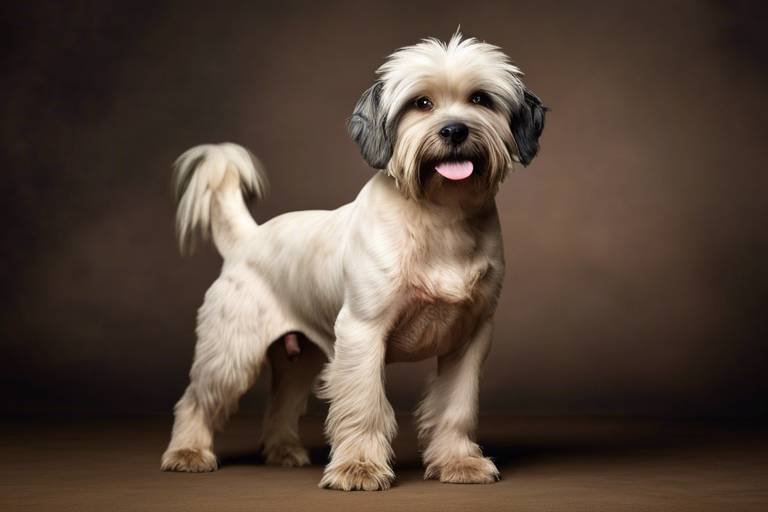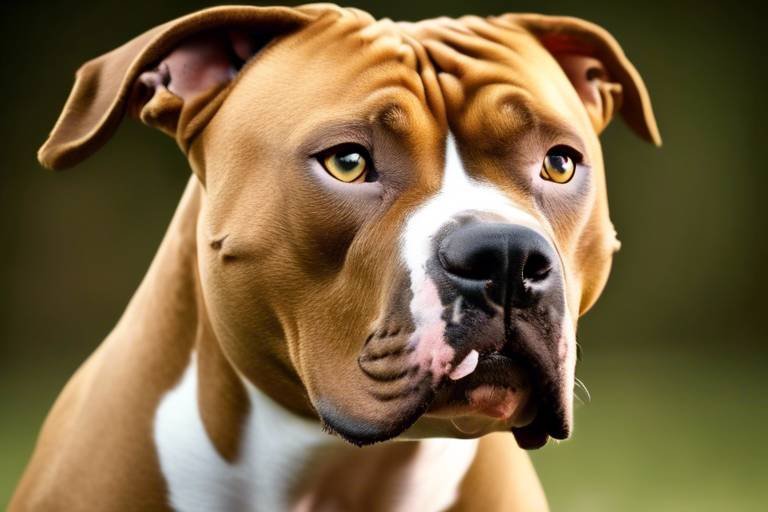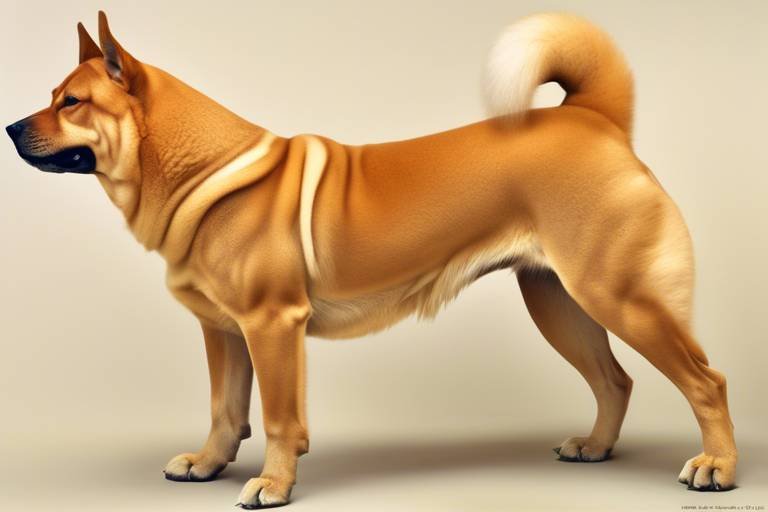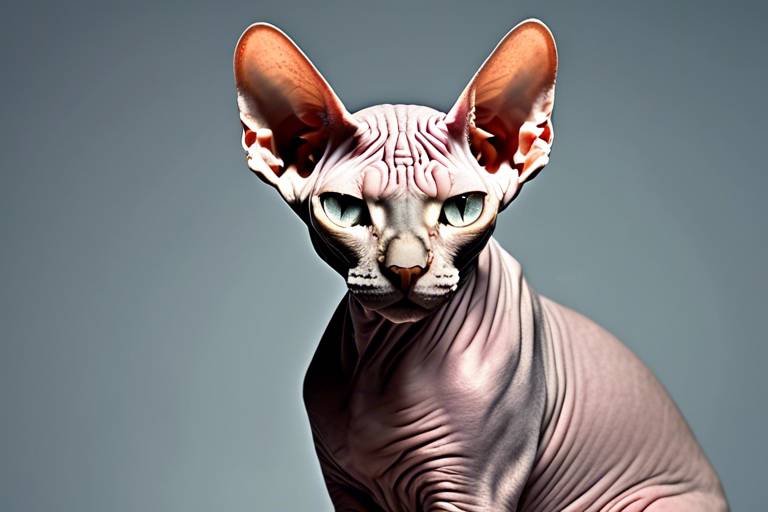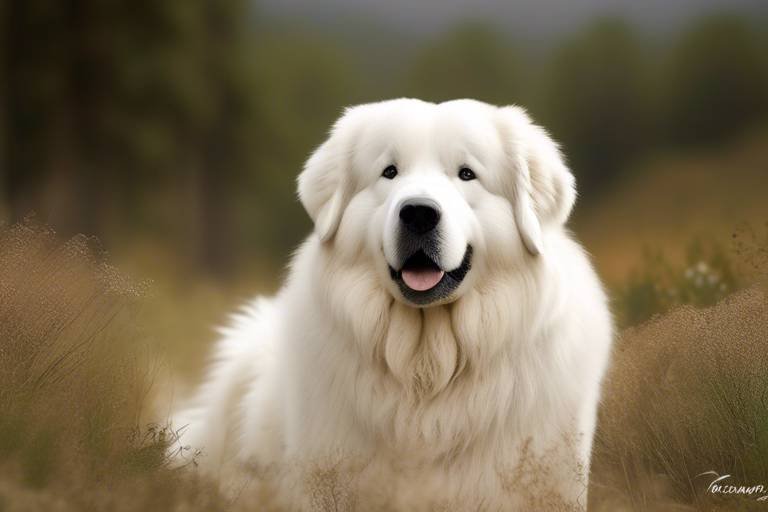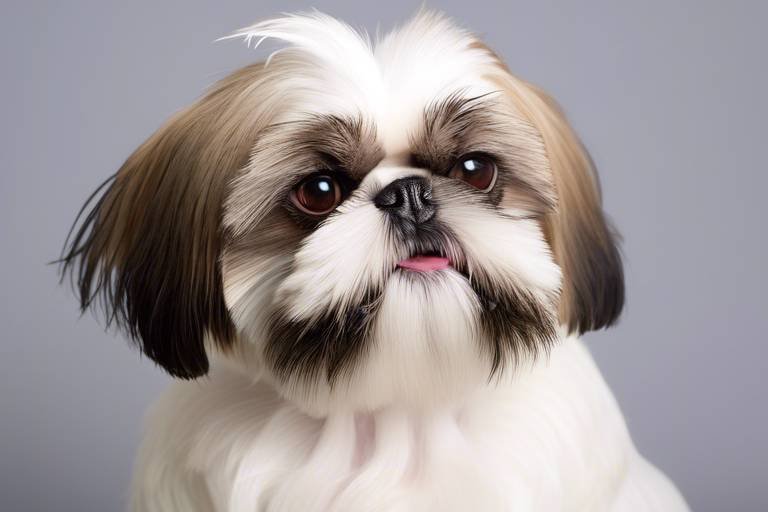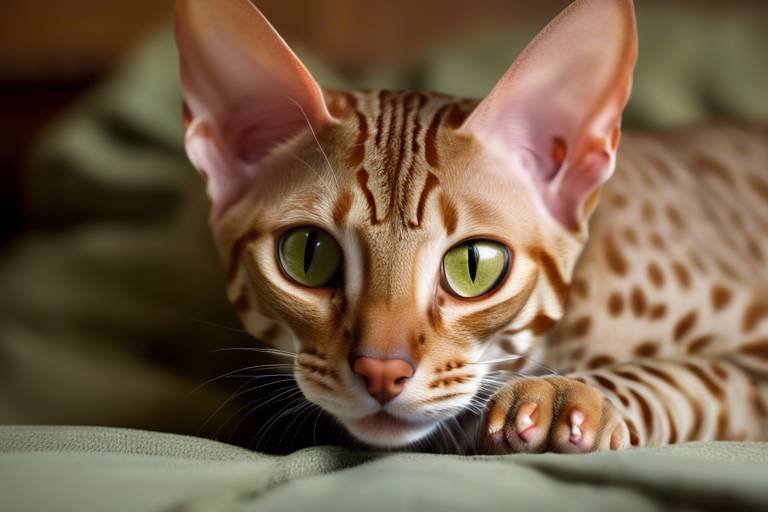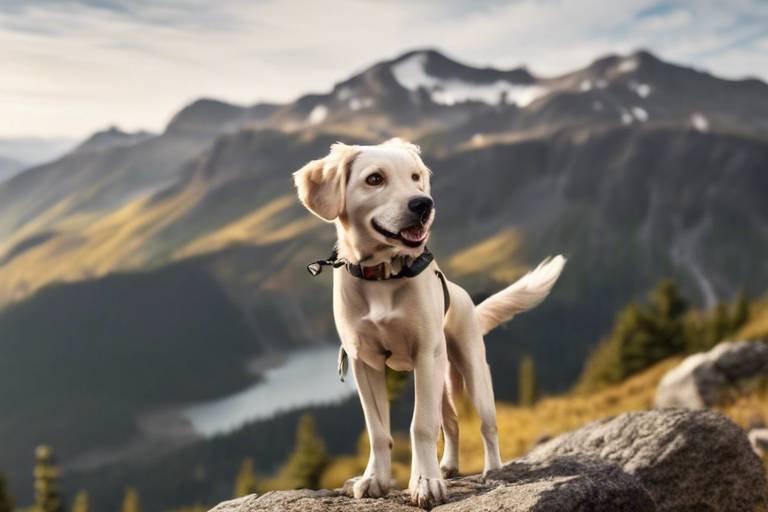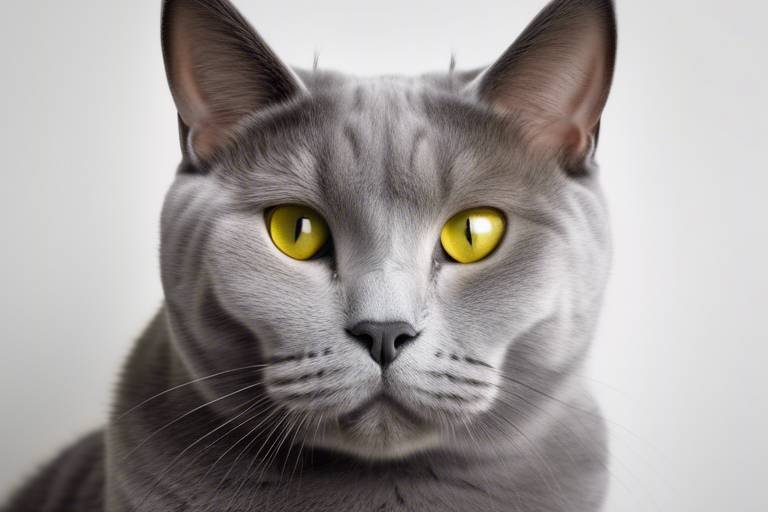A Guide to Rare Dog Breeds - Characteristics and Care
This article explores unique and rare dog breeds, detailing their characteristics, care requirements, and how to choose the right one for your lifestyle and home environment.
Rare dog breeds often have unique traits that differentiate them from more common breeds. Understanding these characteristics is essential for potential owners to ensure they can meet their specific needs. These breeds may not only come with fascinating histories but also with distinct personalities that can add a special touch to your home. Imagine having a dog that not only turns heads but also sparks conversations wherever you go!
Each rare dog breed has distinct physical and behavioral traits. This section delves into the common characteristics that define these breeds, including size, coat type, and temperament. Knowing these traits can help you find a breed that matches your lifestyle and preferences. For instance, some breeds might be perfect for active families, while others are suited for a more laid-back environment.
Physical traits can vary significantly among rare breeds. From their unique body shapes to their eye-catching coats, these dogs are anything but ordinary. Let's take a closer look at two main aspects: size variations and coat types.
Rare dog breeds come in various sizes, from tiny to large. Understanding these size variations can help potential owners choose a breed that fits their living space. For instance, if you live in a small apartment, a compact breed like the Cavalier King Charles Spaniel might be ideal. On the other hand, if you have a large backyard, a breed like the Irish Wolfhound could be a perfect fit. Here’s a quick comparison:
| Breed | Size | Ideal Living Space |
|---|---|---|
| Cavalier King Charles Spaniel | Small | Apartment |
| Irish Wolfhound | Large | Large backyard |
| Basenji | Medium | House with a yard |
The coat types of rare breeds can range from short and smooth to long and curly. This section highlights the grooming needs associated with different coat types. For example, breeds like the Lagotto Romagnolo have curly coats that require regular grooming to prevent matting, while the Shiba Inu has a double coat that sheds seasonally but requires less frequent grooming. Understanding these needs is crucial to ensure your furry friend stays healthy and happy!
Behavioral traits are crucial when selecting a rare breed. This subheading examines the typical temperament and energy levels of various rare dog breeds. Some breeds are known for their gentle demeanor, making them great companions for children, while others are more energetic and require an active owner to keep up with their playful nature. For example, the Norfolk Terrier is known for its friendly and affectionate personality, perfect for families, while the Azawakh is a more independent breed that thrives with experienced owners.
Caring for rare dog breeds often requires specific knowledge and resources. This section outlines the general care needs, including diet, exercise, and health considerations. Each breed comes with its own set of challenges and rewards, and being prepared can make all the difference. Are you ready to dive into the world of dog care?
Different breeds may have unique dietary requirements. This subheading discusses the importance of a balanced diet tailored to the specific needs of rare dog breeds. For instance, some breeds may be prone to obesity, so a diet low in calories but high in nutrients is essential. On the other hand, active breeds might require higher protein levels to support their energy needs. Always consult with a veterinarian to find the best diet for your rare breed!
Regular exercise and proper training are essential for all dogs, especially rare breeds. This section provides tips on how to effectively train and exercise these unique companions. For example, incorporating daily walks and engaging playtime can help keep your dog physically fit and mentally stimulated. Training sessions should be fun and rewarding, using positive reinforcement to encourage good behavior.
- What are some examples of rare dog breeds? Some examples include the Azawakh, Lagotto Romagnolo, and Norfolk Terrier.
- How do I choose the right rare breed for my family? Consider your living space, activity level, and the breed's temperament.
- What special care do rare breeds require? They may require specific diets, grooming, and exercise tailored to their unique needs.
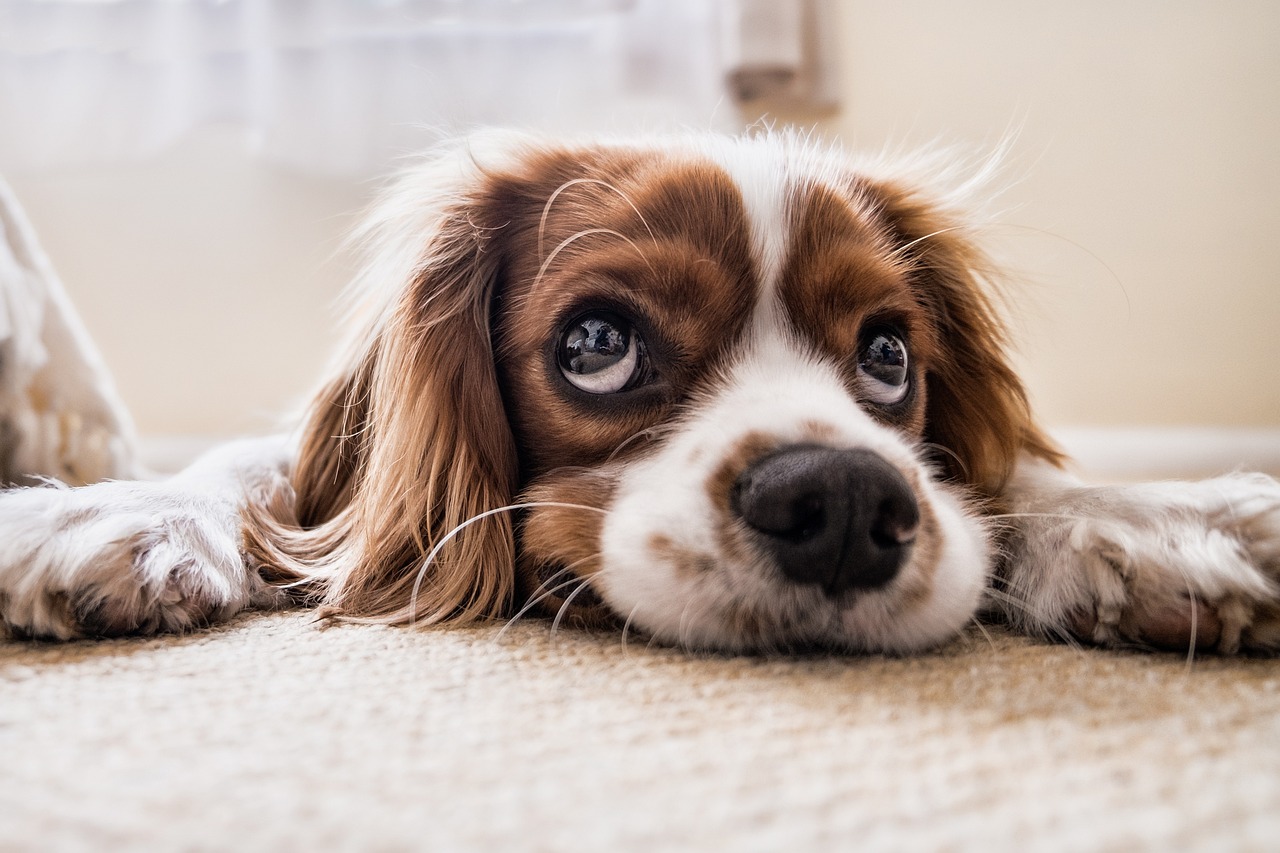
[Understanding Rare Dog Breeds]
This article explores unique and rare dog breeds, detailing their characteristics, care requirements, and how to choose the right one for your lifestyle and home environment.
When we think about dogs, images of popular breeds like Labradors or Golden Retrievers often come to mind. However, there exists a fascinating world of rare dog breeds that are not only unique in appearance but also rich in history and personality. Understanding these breeds is essential for anyone considering adding a furry friend to their family. Rare dog breeds often have distinctive traits that set them apart from the more common varieties. These traits can include everything from their physical appearance to their behavioral quirks.
One of the most intriguing aspects of rare breeds is their genetic diversity. Many of these dogs have origins that can be traced back to specific regions or cultures, often bred for unique purposes such as herding, hunting, or companionship. This rich background contributes to their unique characteristics, making them not only pets but also a piece of living history. For instance, the Norwegian Lundehund is known for its incredible flexibility and ability to climb steep cliffs, traits that were essential for hunting puffins in its native Norway.
Owning a rare breed can be a rewarding experience, but it comes with its own set of challenges. Potential owners should be aware that these dogs may require specialized care and attention. For instance, some rare breeds are prone to specific health issues that are less common in more prevalent breeds. This means that understanding their needs is crucial for their well-being. Additionally, rare breeds often have lower population numbers, which can make finding a reputable breeder more challenging. Thus, doing thorough research is vital.
Moreover, the rarity of these breeds often leads to misconceptions. Many people assume that rare breeds are inherently more difficult to train or care for, but this is not always the case. Just like any other dog, their temperament and trainability can vary widely. Some rare breeds, such as the Basenji, are known for their intelligence and independence, which can make training a fun challenge. Others, like the American Eskimo Dog, are eager to please and can be trained with relative ease. Understanding the individual characteristics of each breed is essential for a successful dog-owner relationship.
In summary, rare dog breeds offer a unique opportunity to connect with a less conventional companion. By understanding their distinct traits, potential owners can make informed decisions and provide the necessary care to ensure a happy and healthy life for their new friend. As we delve deeper into the characteristics and care requirements of these breeds, keep in mind that each dog is an individual, deserving of love, attention, and understanding.
Each rare dog breed has distinct physical and behavioral traits. This section delves into the common characteristics that define these breeds, including size, coat type, and temperament.
Physical traits can vary significantly among rare breeds. This subheading discusses the various sizes, shapes, and coat types that are typical in these unique dogs.
Rare dog breeds come in various sizes, from tiny to large. Understanding these size variations can help potential owners choose a breed that fits their living space.
The coat types of rare breeds can range from short and smooth to long and curly. This section highlights the grooming needs associated with different coat types.
Behavioral traits are crucial when selecting a rare breed. This subheading examines the typical temperament and energy levels of various rare dog breeds.
Caring for rare dog breeds often requires specific knowledge and resources. This section outlines the general care needs, including diet, exercise, and health considerations.
Different breeds may have unique dietary requirements. This subheading discusses the importance of a balanced diet tailored to the specific needs of rare dog breeds.
Regular exercise and proper training are essential for all dogs, especially rare breeds. This section provides tips on how to effectively train and exercise these unique companions.
- What are the most common rare dog breeds?
- How do I find a reputable breeder for rare breeds?
- Are rare dog breeds more prone to health issues?
- Can rare breeds be trained easily?
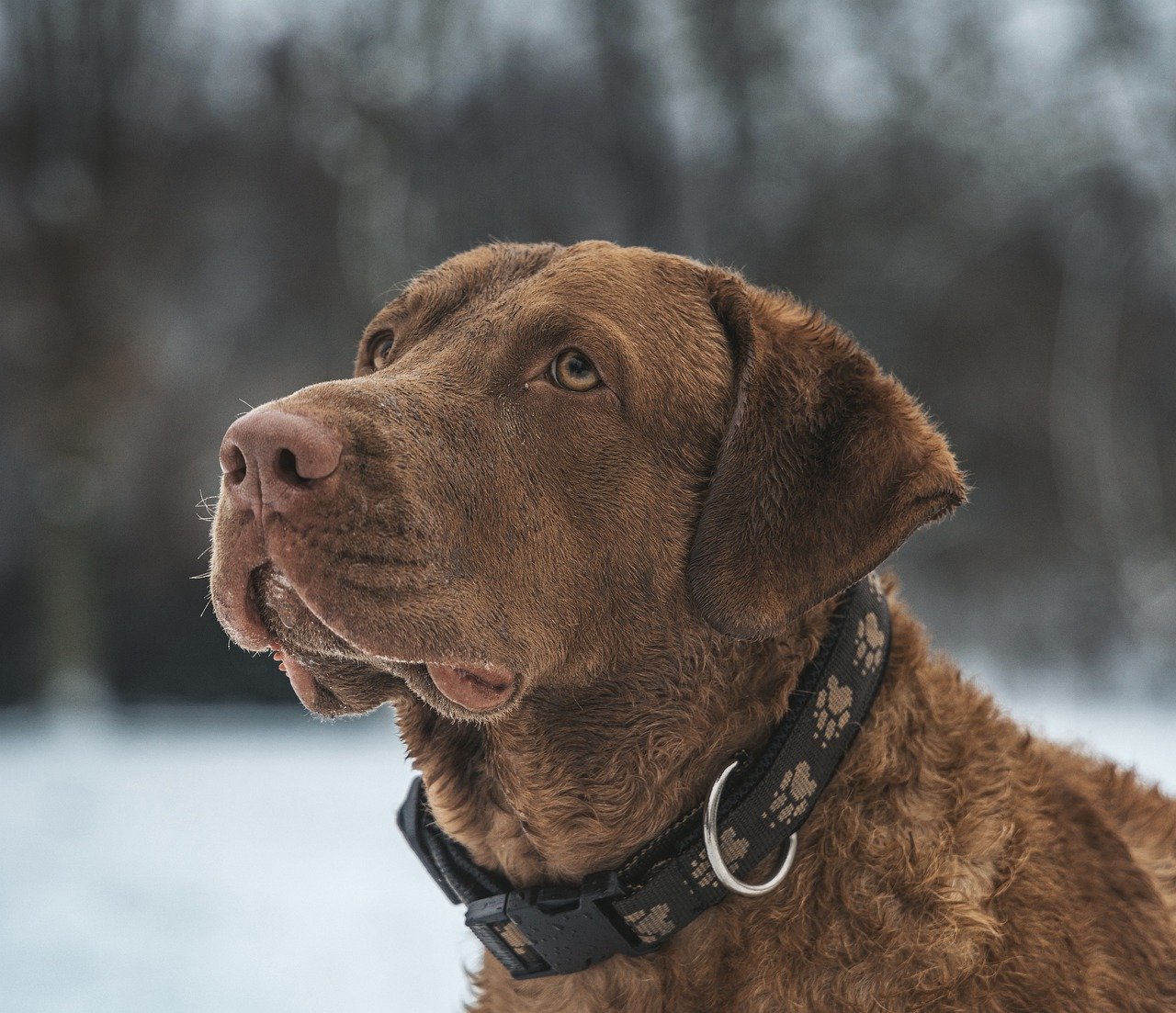
[Characteristics of Rare Breeds]
Rare dog breeds are like hidden gems in the canine world, each boasting its own unique set of characteristics that set them apart from more common breeds. Understanding these traits is essential for anyone considering welcoming one of these distinctive pups into their home. From their physical attributes to their behavioral tendencies, each rare breed has something special to offer. Let’s dive deeper into what makes these breeds so unique.
When it comes to physical traits, rare dog breeds can be incredibly diverse. They come in a variety of sizes, shapes, and coat types that reflect their unique heritage. For instance, some breeds might be as small as a teacup, while others could weigh in at over a hundred pounds. This diversity means that potential owners need to consider their living space and lifestyle when choosing a breed. Here’s a quick breakdown of some common size variations:
| Size Category | Examples of Rare Breeds | Approximate Weight |
|---|---|---|
| Tiny | Chihuahua, Papillon | 2-10 lbs |
| Small | American Eskimo Dog (Toy), Basenji | 10-30 lbs |
| Medium | American Foxhound, Lagotto Romagnolo | 30-50 lbs |
| Large | Great Pyrenees, Irish Wolfhound | 50-120 lbs |
In addition to size, the coat types of rare breeds can vary significantly. Some breeds have short, smooth coats that require minimal grooming, while others possess long, curly fur that demands regular maintenance. Understanding the grooming needs associated with different coat types is crucial for potential owners. For example:
- Short Coats: Generally easier to maintain, requiring less frequent brushing.
- Long Coats: Often need regular brushing to prevent matting and tangles.
- Curly Coats: Can be hypoallergenic, but require specialized grooming to maintain their shape.
Beyond their physical appearance, the behavioral traits of rare breeds are equally important. Each breed has its own personality, energy level, and temperament, which can greatly influence how they fit into a family or lifestyle. Some rare breeds are known for being incredibly friendly and sociable, while others may be more reserved or independent. Understanding these traits can help you select a breed that complements your home life. For instance:
- High Energy Breeds: These dogs require plenty of exercise and mental stimulation. Examples include the Belgian Malinois and American Staffordshire Terrier.
- Calm Breeds: More laid-back and suitable for quieter households, such as the Shikoku or Norwegian Lundehund.
Choosing a rare breed means embracing their unique characteristics and understanding that they may require a bit more attention and care compared to more common breeds. But for many dog lovers, the reward of having a one-of-a-kind companion is well worth the effort!
Q: What is the most rare dog breed?
A: While rarity can vary by region, some of the rarest breeds include the Norwegian Lundehund and the Otterhound.
Q: Are rare dog breeds more difficult to care for?
A: Not necessarily. While some rare breeds may have specific care needs, many are just as easy to care for as common breeds. It's important to research each breed individually.
Q: How can I find a rare breed dog?
A: Look for reputable breeders, breed-specific rescue organizations, or adoption events that focus on rare breeds.
[Physical Traits]
When it comes to rare dog breeds, their physical traits can be as diverse as the breeds themselves. From the tiniest teacup pups to the majestic giants, these dogs come in a variety of shapes and sizes that can truly take your breath away. For potential owners, understanding these traits is not just about aesthetics; it’s about making sure that the breed you choose fits well with your lifestyle and living space.
Let’s dive into the fascinating world of size variations. Rare dog breeds can be categorized into three primary size groups: small, medium, and large. Each category offers unique advantages and challenges. For example, small breeds like the Chihuahua or the Japanese Chin are perfect for apartment living due to their compact size. On the other hand, larger breeds such as the Tibetan Mastiff or the Irish Wolfhound require more space to roam and play. It's crucial to consider your living environment when choosing a breed, as a large dog in a small apartment can lead to both frustration and behavioral issues.
Next, let’s talk about coat types. The variety in coat types among rare breeds is astounding. Some breeds boast short, sleek fur that requires minimal grooming, while others have long, flowing coats that need regular maintenance. For instance, the Bedlington Terrier has a unique curly coat that not only looks adorable but also requires consistent grooming to prevent matting. On the flip side, breeds like the American Hairless Terrier have little to no fur, which can be a blessing for allergy sufferers but requires owners to be vigilant about sunburn and skin care.
Here’s a quick comparison of common coat types in rare breeds:
| Coat Type | Examples of Breeds | Grooming Needs |
|---|---|---|
| Short and Smooth | American Hairless Terrier, Basenji | Low |
| Curly | Bedlington Terrier, Poodle | High |
| Long and Flowing | Afghan Hound, Silky Terrier | Very High |
In addition to size and coat characteristics, it’s essential to consider the overall physical build of these breeds. Some rare breeds may have sturdy, muscular bodies, while others might be more delicate and refined. For example, the Saluki is known for its slender, athletic frame, making it an exceptional runner, while the Neapolitan Mastiff is robust and stocky, with loose skin that gives it a distinctive appearance. Understanding these physical attributes can help you anticipate the exercise and space needs of your new furry companion.
In conclusion, the physical traits of rare dog breeds are not just about looks; they play a vital role in their care and compatibility with your lifestyle. By understanding the size, coat type, and overall build of these unique dogs, you can make a more informed decision when choosing the perfect breed for your home.
[Size Variations]
When it comes to rare dog breeds, one of the most fascinating aspects is their size variations. These breeds can range from tiny companions that fit snugly in your lap to large, majestic dogs that command attention wherever they go. Understanding these size differences is crucial for potential dog owners, as it directly impacts the living arrangements, exercise needs, and overall care of the dog.
For instance, small rare breeds like the Cavalier King Charles Spaniel or the American Hairless Terrier typically weigh between 10 to 20 pounds. Their compact size makes them ideal for apartment living or homes with limited space. However, it’s important to remember that just because they’re small doesn’t mean they don’t need their daily dose of exercise and mental stimulation. These little furballs often have big personalities and require just as much playtime as their larger counterparts.
On the other end of the spectrum, we have larger rare breeds such as the Irish Wolfhound or the Leonberger. These gentle giants can weigh anywhere from 90 to over 150 pounds! While their size may seem intimidating, many of these breeds are known for their calm and affectionate nature. However, potential owners need to consider the space required for such large dogs, as well as their exercise needs, which can be quite substantial. A spacious yard and regular walks are essential to keep these breeds happy and healthy.
Here’s a quick comparison of some rare dog breeds and their sizes:
| Breed | Size Category | Weight Range |
|---|---|---|
| Cavalier King Charles Spaniel | Small | 10-20 lbs |
| American Hairless Terrier | Small | 10-16 lbs |
| Irish Wolfhound | Large | 90-150 lbs |
| Leonberger | Large | 90-170 lbs |
In summary, the size of a rare dog breed plays a pivotal role in determining how well they fit into your lifestyle. Whether you’re leaning towards a pint-sized pooch or a grand canine companion, it’s essential to assess your living situation and ensure you can meet the needs of your chosen breed. Remember, each dog, regardless of size, deserves love, attention, and care!
- What are the most common rare dog breeds? Some popular rare breeds include the Azawakh, Lagotto Romagnolo, and Norwegian Lundehund.
- How do I choose the right size dog for my home? Consider your living space, activity level, and the amount of time you can dedicate to exercise and training.
- Are smaller dogs easier to care for than larger dogs? Not necessarily! Smaller dogs can have high energy levels and require just as much attention and care as larger breeds.
[Coat Types]
When it comes to rare dog breeds, one of the most striking features is their diverse coat types. Each breed can have a unique coat that not only adds to its beauty but also influences grooming needs and overall care. Understanding the different coat types is essential for potential owners, as it can greatly impact the time and resources required for maintenance.
Coat types in rare breeds can typically be categorized into a few main categories:
- Short and Smooth: Breeds like the Basenji or American Foxhound often have short, sleek coats that are easy to maintain. These dogs require minimal grooming, making them ideal for busy owners.
- Long and Silky: On the other hand, breeds such as the Yorkshire Terrier or Silky Terrier boast long, flowing coats that require regular brushing to prevent matting. These breeds can be stunning, but they demand a commitment to grooming.
- Curly and Dense: Breeds like the Poodle or Irish Water Spaniel have curly coats that are not only adorable but also hypoallergenic. However, they require frequent grooming to keep their curls looking their best and to prevent tangles.
- Wire-haired: Some breeds, such as the Airedale Terrier, possess a wiry coat that provides protection against the elements. These coats often require special grooming techniques, including hand-stripping, to maintain their texture.
Each coat type comes with its own set of grooming challenges and benefits. For instance, while short-haired breeds may require less grooming, they can be more susceptible to temperature changes, so owners must be mindful of their environment. In contrast, long-haired breeds might struggle with overheating, especially in warmer climates, making it essential to provide them with adequate cooling and hydration.
Moreover, the grooming process can be a bonding experience between the owner and their dog. Regular brushing not only keeps the coat healthy but also helps the dog feel comfortable and loved. So, if you’re considering a rare breed, think about the time and effort you can dedicate to grooming. A well-groomed dog is not just a pleasure to look at; it’s also a reflection of the care and attention you provide.
In conclusion, understanding the coat types of rare dog breeds is crucial for any potential owner. Whether you’re drawn to the low-maintenance short-haired breeds or the glamorous long-haired companions, each type requires a different level of care. Choose wisely, and you’ll find a furry friend that fits seamlessly into your lifestyle.
Q1: How often should I groom my rare breed dog?
A: Grooming frequency depends on the coat type. Short-haired breeds may need grooming once a week, while long-haired breeds may require daily brushing.
Q2: Are there hypoallergenic rare dog breeds?
A: Yes, breeds like the Poodle and the Irish Water Spaniel have curly coats that are less likely to trigger allergies.
Q3: What tools do I need for grooming?
A: Basic grooming tools include a brush, comb, nail clippers, and shampoo suitable for your dog's coat type.
Q4: Can I groom my dog at home?
A: Absolutely! Many owners successfully groom their dogs at home. However, for certain breeds, professional grooming may be beneficial.
[Behavioral Traits]
When it comes to rare dog breeds, understanding their behavioral traits is just as important as knowing their physical characteristics. These unique canines often possess distinct temperaments that can greatly influence how they fit into your home and lifestyle. For instance, some rare breeds are known for their gentle nature, making them perfect companions for families, while others might have a more independent streak, requiring a more experienced owner to manage their spirited personalities.
One of the most fascinating aspects of rare dog breeds is their energy levels. Some breeds, like the Norwegian Lundehund, are bursting with energy and require plenty of exercise to keep them happy and healthy. On the other hand, breeds such as the Shikoku might be more moderate in their activity needs, making them suitable for owners with a less active lifestyle. It’s essential to match a breed’s energy level with your own to ensure a harmonious relationship.
In terms of temperament, many rare breeds exhibit unique traits that can be both endearing and challenging. For example, the Lagotto Romagnolo is known for its affectionate nature, often forming strong bonds with family members. In contrast, the Azawakh can be quite aloof with strangers, making them excellent watchdogs but potentially challenging in social situations. Understanding these traits can help you prepare for training and socialization needs.
Furthermore, some rare breeds may have specific instinctual behaviors tied to their history. Breeds like the Basenji are known for their cat-like grooming habits and independence, while the American Hairless Terrier is playful and energetic, often requiring mental stimulation through interactive play. It’s crucial to consider these traits when selecting a breed, as they can affect how you approach training and daily activities.
Lastly, it’s important to note that individual dogs can vary significantly within a breed. Just like humans, each dog has its own personality shaped by genetics, environment, and upbringing. Therefore, when bringing a rare breed into your home, take the time to observe and understand your new companion’s unique quirks and preferences. This understanding will not only enhance your bond but also help you create a nurturing environment that caters to their specific needs.
- What are some common behavioral issues in rare dog breeds?
Common issues can include separation anxiety, stubbornness, and excessive barking, often stemming from their unique temperaments and needs.
- How can I train a rare dog breed effectively?
Using positive reinforcement techniques, consistency, and patience is key. Tailoring your training approach to the breed's specific traits will yield better results.
- Are rare dog breeds good with children?
Many rare breeds can be excellent family pets, but it’s essential to research each breed's temperament and energy level to ensure a good match.
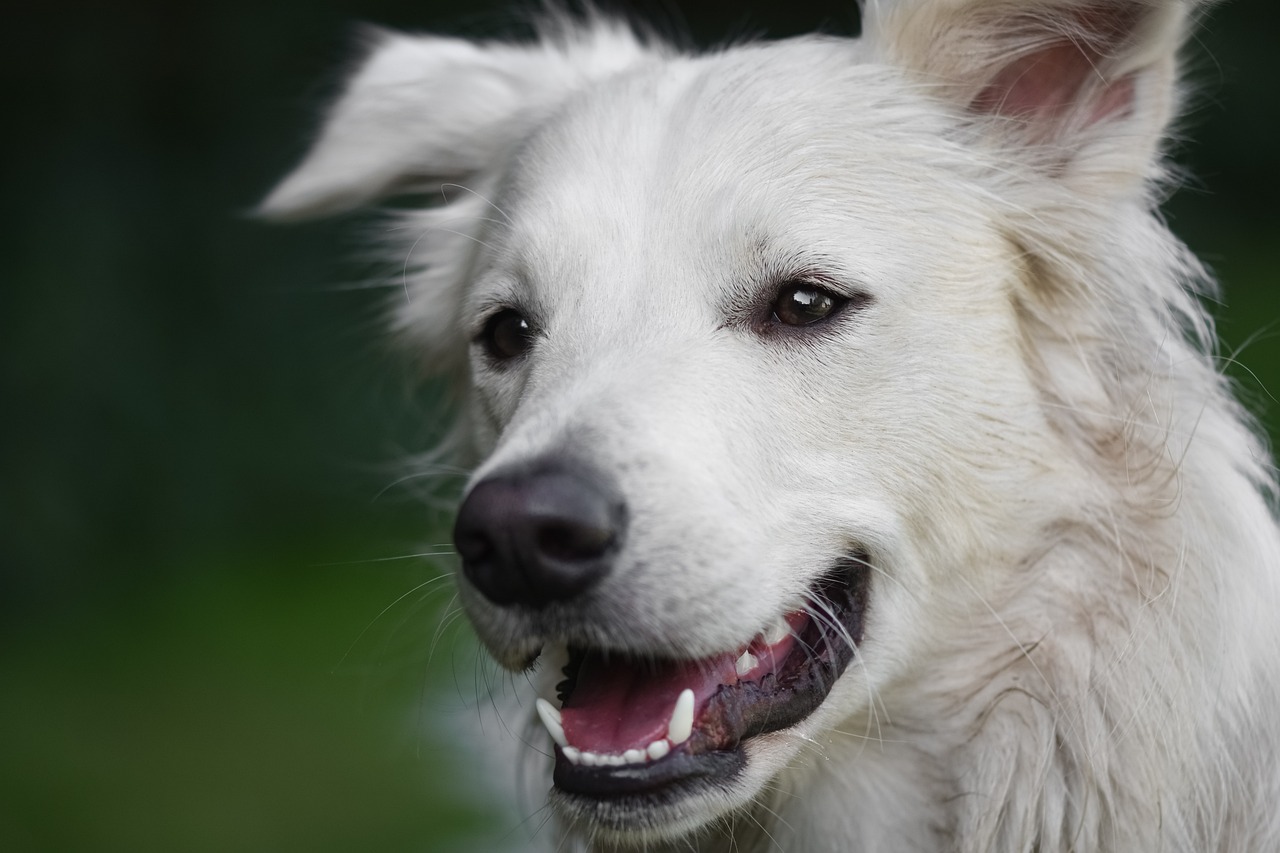
[Care Requirements]
Caring for rare dog breeds can be both a rewarding and challenging experience. These unique companions often come with specific needs that differ from more common breeds. Understanding their care requirements is essential to ensure they live a healthy and happy life. From dietary needs to exercise routines, each aspect of their care plays a vital role in their overall well-being. So, what do you need to know to keep your rare breed thriving?
First and foremost, dietary needs are crucial. Rare breeds may have unique nutritional requirements based on their size, age, and activity level. A balanced diet tailored to their specific needs can prevent health issues and promote longevity. For instance, some breeds may thrive on a high-protein diet, while others might require a lower fat content. It's always a good idea to consult with a veterinarian who understands the breed to create a suitable meal plan. Here’s a quick overview of dietary considerations:
| Breed | Dietary Needs |
|---|---|
| Basenji | High-protein, low-fat diet |
| Lagotto Romagnolo | Balanced diet with Omega fatty acids |
| Chinook | High-calorie diet for energy |
Next, let’s talk about exercise and training. Regular physical activity is vital for all dogs, but it’s especially important for rare breeds that may have higher energy levels. These dogs often require more than just a daily walk; they thrive on engaging activities that stimulate both their body and mind. For example, breeds like the American English Coonhound need plenty of space to run and explore, while others may enjoy agility training or interactive games. Finding the right balance of exercise can help prevent behavioral problems and keep your dog healthy.
Training is another essential aspect of care. Rare breeds can be more sensitive or independent than more common breeds, which means training may require a different approach. Positive reinforcement techniques work wonders in encouraging good behavior. Consistency and patience are key, as these dogs may take longer to learn commands. Consider enrolling in a training class specifically designed for your dog’s breed to ensure they receive the best guidance.
Lastly, don’t overlook the importance of regular veterinary check-ups. Rare breeds might be predisposed to certain health conditions, making it crucial to stay on top of their health care. Regular check-ups can help catch any potential health issues early on, ensuring your furry friend stays in tip-top shape. Vaccinations, dental care, and preventative medications should also be part of your dog’s health routine.
In summary, caring for a rare dog breed involves understanding their unique needs, from diet to exercise and health care. By being proactive and informed, you can ensure that your rare breed not only survives but thrives in your home. So, are you ready to take on the challenge of caring for one of these unique companions?
- What are the most common health issues in rare dog breeds?
Many rare breeds can be prone to specific health issues, including hip dysplasia, eye problems, and skin conditions. Regular vet visits can help catch these issues early. - How much exercise do rare dog breeds need?
Exercise needs can vary widely among rare breeds. Generally, they require at least 30 minutes to 2 hours of physical activity daily, depending on their energy levels. - Are rare dog breeds good with children?
Many rare breeds can be excellent family pets, but it’s essential to research the specific breed’s temperament to ensure they are a good fit for your household.
[Dietary Needs]
When it comes to caring for rare dog breeds, one of the most crucial aspects to consider is their dietary needs. Each breed has its own unique requirements, influenced by factors such as size, age, and activity level. Providing a balanced diet tailored to these specific needs is essential for maintaining your dog's health and vitality. Just like humans, dogs thrive on a diet that meets their nutritional needs, and failing to do so can lead to health issues down the line.
Generally, rare dog breeds may have higher or lower caloric needs compared to more common breeds. For instance, a small breed like the Chow Chow may require fewer calories than a larger breed such as the Irish Wolfhound. Understanding the right balance of protein, fats, carbohydrates, vitamins, and minerals is key. Here’s a quick breakdown of what to look for:
| Nutrient | Importance | Sources |
|---|---|---|
| Protein | Essential for muscle development and repair | Meat, fish, eggs |
| Fats | Provides energy and supports skin health | Fish oil, chicken fat, flaxseed oil |
| Carbohydrates | Source of energy; aids digestion | Brown rice, sweet potatoes, oats |
| Vitamins & Minerals | Supports overall health and immune function | Fruits, vegetables, supplements |
Furthermore, it's important to monitor your dog’s weight and adjust their food intake accordingly. Rare breeds can be prone to certain health issues, and obesity is one of the most common problems. Regular vet check-ups can help ensure that your dog is at a healthy weight and receiving the right nutrients. Additionally, consider the following tips:
- Choose high-quality dog food: Look for brands that list meat as the first ingredient and avoid fillers.
- Consult with a vet: They can provide tailored advice based on your dog's specific breed and health status.
- Monitor food intake: Keep track of how much your dog eats and adjust portions as needed.
In summary, meeting the dietary needs of rare dog breeds is not just about feeding them; it’s about understanding their unique requirements and being proactive in ensuring they receive the best nutrition possible. By paying close attention to their diet, you can help your rare breed thrive and live a long, healthy life.
1. What is the best diet for rare dog breeds?
The best diet varies by breed but generally includes high-quality protein sources, healthy fats, and a mix of carbohydrates. Always consult your veterinarian for breed-specific recommendations.
2. How often should I feed my rare breed dog?
Most adult dogs do well with two meals a day, while puppies may need three to four smaller meals. Adjust based on your dog's age, size, and energy level.
3. Can rare breeds eat human food?
While some human foods are safe for dogs, many can be harmful. Always check with your vet before introducing any new foods to your dog's diet.
[Exercise and Training]
When it comes to exercising and training rare dog breeds, understanding their unique needs is crucial. Just like humans, each dog has its own personality, energy level, and quirks. Some rare breeds may have boundless energy and require daily rigorous exercise, while others might be more laid-back, enjoying leisurely walks and playtime. For instance, a rare breed like the Norwegian Lundehund is known for its agility and requires ample exercise to keep it happy and healthy. On the other hand, breeds like the American Bully may be more content with moderate physical activity.
Regular exercise is not just about keeping your dog fit; it also plays a significant role in their mental health. Dogs that don’t get enough physical activity can develop behavioral issues, such as excessive barking or chewing. To avoid these problems, consider incorporating a mix of activities into your dog’s routine. This could include walks, fetch, agility training, and even swimming. The key is to keep it fun and engaging!
Training is another essential aspect of caring for rare dog breeds. Many of these dogs are intelligent and eager to please, making them relatively easy to train compared to more stubborn breeds. However, it's important to use positive reinforcement techniques, such as treats and praise, to encourage good behavior. For example, if you’re training a Lagotto Romagnolo, which is known for its intelligence, employing a reward-based system will yield better results than using harsh correction methods.
Consistency is also vital in both exercise and training. Establishing a routine helps your dog understand what to expect and can significantly reduce anxiety. Aim for at least 30 minutes to 2 hours of exercise daily, depending on the breed's energy level. Here’s a quick breakdown of typical exercise needs for some rare breeds:
| Breed | Daily Exercise Requirement |
|---|---|
| Norwegian Lundehund | 1-2 hours |
| Lagotto Romagnolo | 1 hour |
| American Bully | 30-60 minutes |
| Azawakh | 1-2 hours |
Additionally, socialization is a critical part of training for rare breeds. Exposing your dog to various environments, people, and other animals helps them develop good behavior and confidence. A well-socialized dog is less likely to exhibit fear or aggression towards new experiences. Consider enrolling your dog in obedience classes or puppy socialization groups, especially during their formative months.
In conclusion, exercising and training rare dog breeds is not just about keeping them physically fit; it’s about nurturing their mental well-being and ensuring they grow up to be well-adjusted companions. By understanding their unique needs and establishing a consistent routine, you can build a strong bond with your rare breed while ensuring they live a happy, healthy life.
- How much exercise does a rare dog breed need?
It varies by breed, but most require between 30 minutes to 2 hours of exercise daily. - What is the best way to train a rare dog breed?
Use positive reinforcement techniques, such as treats and praise, and be consistent with commands. - Are rare dog breeds more difficult to train?
Not necessarily. Many rare breeds are intelligent and eager to learn, but they may require specific training approaches. - How can I socialize my rare dog breed?
Expose them to different environments, people, and other animals from a young age, and consider enrolling them in socialization classes.
Frequently Asked Questions
- What are rare dog breeds?
Rare dog breeds are those that are not commonly found or bred, making them unique in appearance and characteristics. These breeds often have specific traits that set them apart from more popular breeds, and they can vary widely in size, coat type, and temperament.
- How do I choose the right rare dog breed for my lifestyle?
Choosing the right rare dog breed involves considering your living situation, activity level, and personal preferences. Think about the size of your home, whether you have a yard, and how much time you can dedicate to exercise and training. Researching the specific needs and characteristics of the breeds you’re interested in is essential.
- What are the common characteristics of rare dog breeds?
Common characteristics of rare dog breeds include unique physical traits such as size, coat type, and color, as well as behavioral traits like temperament and energy levels. Each breed has its own distinct personality, which can affect how they interact with people and other pets.
- What are the grooming needs for rare dog breeds?
Grooming needs vary significantly among rare dog breeds depending on their coat type. Some may require regular brushing and grooming to prevent matting, while others might need less maintenance. It's important to understand the specific grooming requirements of the breed you choose to ensure their coat remains healthy.
- Are rare dog breeds prone to specific health issues?
Yes, some rare dog breeds can be predisposed to certain health issues due to their genetic background. It's crucial to research the breed's common health concerns and consult with a veterinarian to ensure you are prepared for any potential health challenges.
- How much exercise do rare dog breeds need?
Exercise needs vary by breed. Some rare breeds may require a lot of physical activity, while others may be more laid-back. Regular exercise is vital for maintaining their health and happiness, so finding a breed that matches your activity level is key.
- Can rare dog breeds be trained easily?
Training can differ among rare dog breeds based on their temperament and intelligence. While some may be eager to learn and easy to train, others might require more patience and consistent training methods. Early socialization and positive reinforcement are crucial for successful training.
- Where can I find rare dog breeds for adoption?
Finding rare dog breeds can be a bit of a treasure hunt! You can check breed-specific rescue organizations, local shelters, or reputable breeders who specialize in rare breeds. Always ensure that you are adopting from a responsible source that prioritizes the health and well-being of the dogs.

